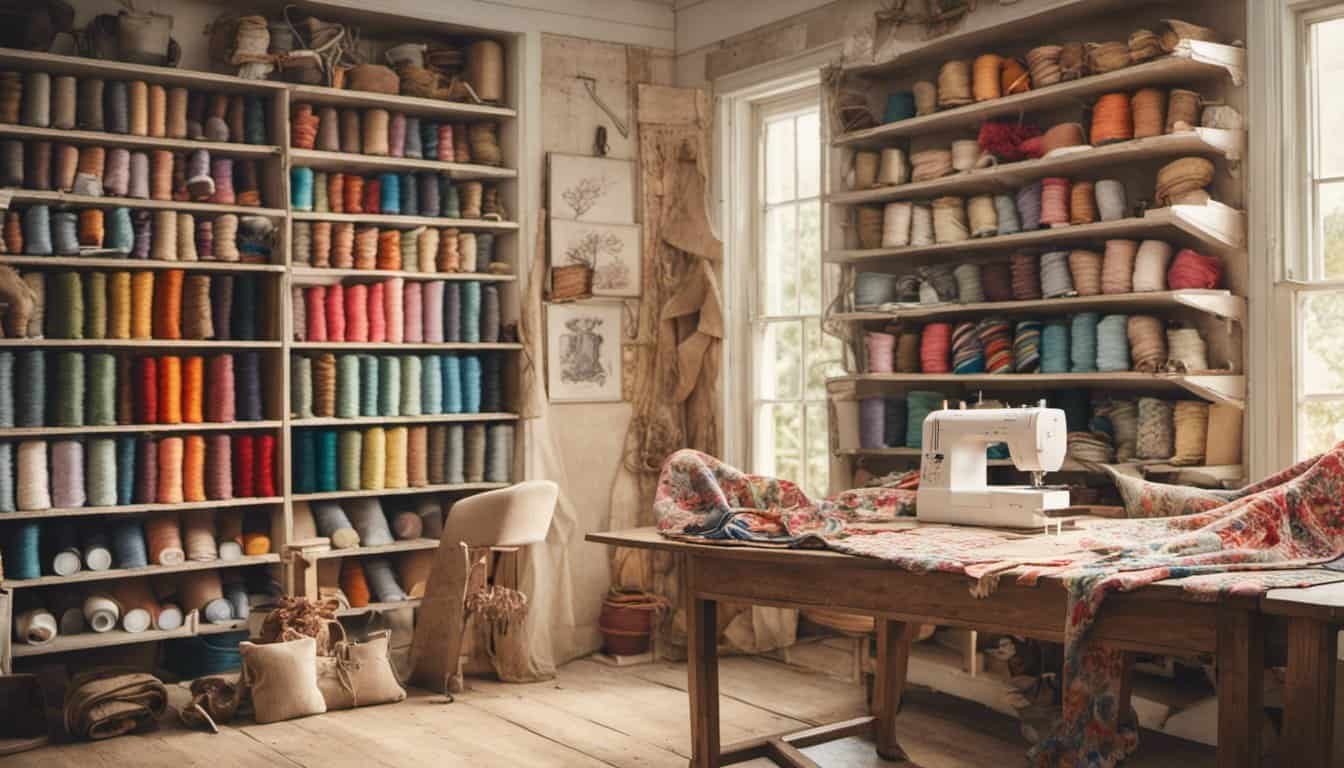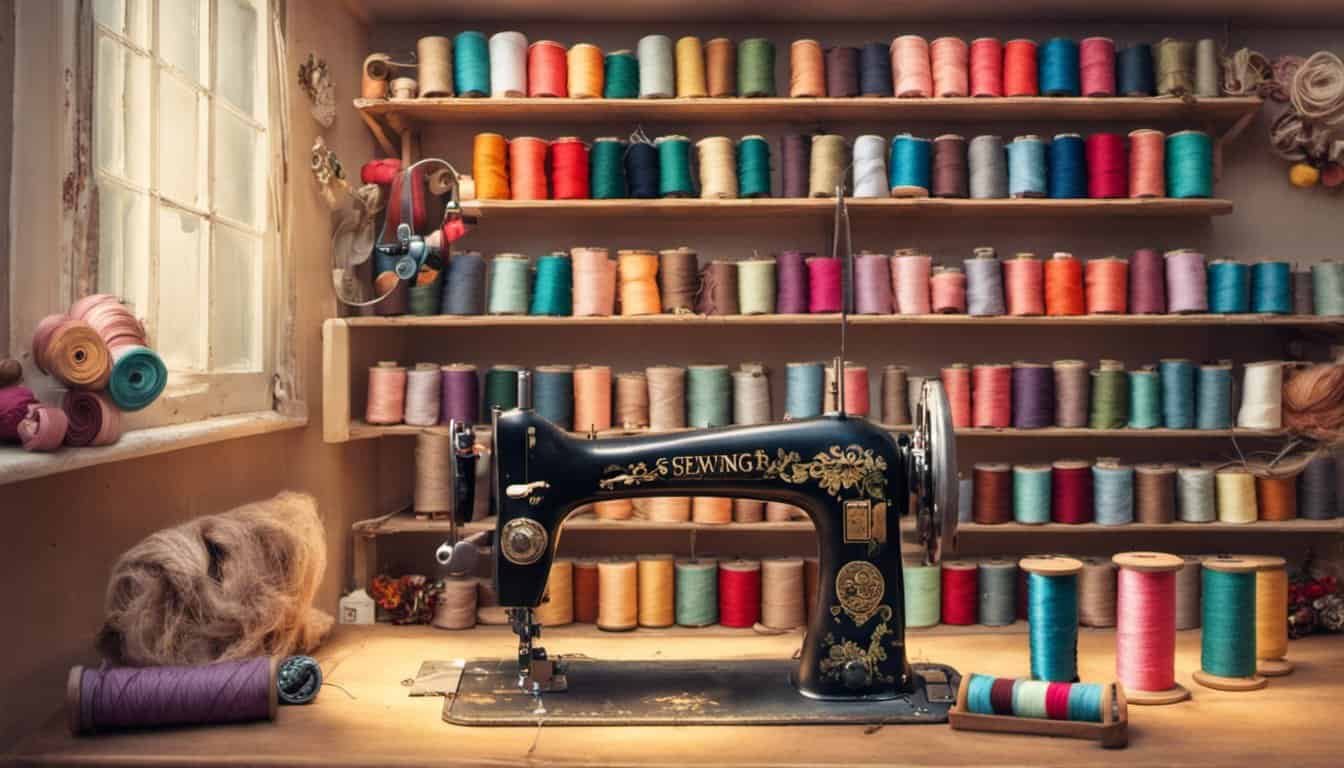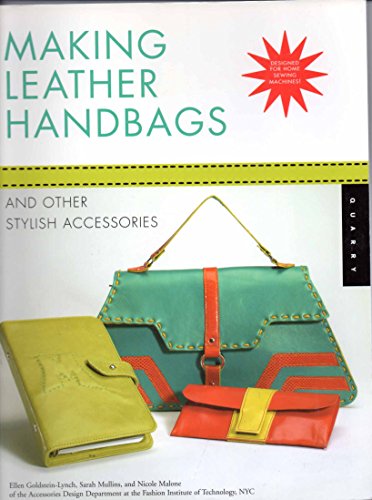Hand-sewing leather opens up a world of creative possibilities, allowing you to craft personalized, durable items that truly reflect your style. If you’re new to leatherwork, the idea might seem intimidating, but with the right guidance, you can master the basics in no time.
In this beginner’s guide, you’ll discover the essential tools and techniques needed to sew leather by hand. From choosing the right materials to executing your first stitches, we’ll walk you through each step with clear instructions and helpful tips.
Whether you’re aiming to make wallets, belts, or unique accessories, this guide will empower you to bring your leather projects to life. Get ready to dive into the rewarding craft of hand-sewing leather and create pieces you’ll be proud to showcase.
Understanding Leather Types
Choosing the right leather is crucial for successful hand-sewing projects. Different leather types offer varying levels of durability, flexibility, and appearance. Understanding these types helps you select the best material for your project.
Full-Grain Leather
Full-grain leather retains the entire grain layer, showcasing natural textures and imperfections. It’s the most durable and ages beautifully, developing a unique patina over time. Ideal for wallets, belts, and high-quality accessories, full-grain leather provides strength and longevity.
Top-Grain Leather
Top-grain leather is sanded and finished to remove imperfections, resulting in a smooth surface. It’s slightly less durable than full-grain but more pliable, making it suitable for bags, jackets, and upholstery. This type offers a balance between durability and aesthetic appeal.
Genuine Leather
Genuine leather is made from the lower layers of the hide, offering a more affordable option. It has a softer feel but is less durable and prone to wear. Suitable for decorative items, small accessories, and projects where budget is a concern, genuine leather provides versatility at a lower cost.
Suede
Suede features a napped finish, created by sanding the inner layer of the hide. It has a soft, velvety texture but is less resistant to water and stains. Use suede for fashion items like shoes, bags, and jackets, keeping in mind the need for careful maintenance.
Nubuck
Nubuck is similar to suede but made from the outer layer of the hide, giving it a finer texture and greater durability. It resists stains better than suede and is ideal for high-end clothing, accessories, and furniture. Nubuck maintains a luxurious appearance with proper care.
Vegetable-Tanned Leather
Vegetable-tanned leather uses natural tannins from plants, resulting in a firm texture that molds well when shaped. It’s environmentally friendly and ideal for intricate hand-sewing projects like tool belts, wallets, and custom accessories. This type responds well to dyes, allowing for personalized finishes.
Chrome-Tanned Leather
Chrome-tanned leather involves chromium salts, producing a softer and more flexible material. It’s resistant to water and oils, making it suitable for items exposed to the elements, such as outdoor gear, shoes, and bags. Chrome-tanned leather offers ease of handling for beginners.
Leather Comparison Table
| Leather Type | Durability | Appearance | Flexibility | Best For |
|---|---|---|---|---|
| Full-Grain | High | Natural, textured | Low | Wallets, belts, accessories |
| Top-Grain | Medium | Smooth | High | Bags, jackets, upholstery |
| Genuine | Low | Varied | Medium | Decorative items, small crafts |
| Suede | Low | Velvety | Medium | Shoes, bags, jackets |
| Nubuck | Medium | Fine texture | Medium | High-end clothing, furniture |
| Vegetable-Tanned | High | Matte, firm | High | Tool belts, wallets, custom accessories |
| Chrome-Tanned | Medium | Soft, flexible | High | Outdoor gear, shoes, bags |
Selecting the appropriate leather type based on your project’s requirements ensures better results and enhances the craftsmanship of your handmade items.
Essential Tools and Materials
Leather
Select high-quality leather such as full-grain or top-grain for durability and ease of sewing. These types offer strength and a smooth surface, ideal for beginner projects like wallets and belts.
Needles
Use leather needles, specifically curved or heavy-duty types, to penetrate thick material without breaking. Sharp needles ensure precise, clean stitches.

Thread
Opt for waxed polyester thread for its strength and resistance to fraying. Waxed thread glides smoothly through leather, providing reliable and long-lasting seams.
Cutting Tools
Invest in sharp rotary cutters or utility knives for making clean, accurate cuts. Sharp blades reduce the risk of tearing and make handling leather easier.
Cutting Mat
A sturdy cutting mat protects your work surface and keeps blades sharp longer. It provides a stable base for cutting and measuring leather pieces.
Rulers and Measuring Tools
Use metal rulers and measuring tapes for precise measurements. Accurate sizing is crucial to ensure pieces fit together correctly in your project.
Leather Punch
A leather punch creates uniform holes for stitching. Consistent hole sizes contribute to the overall neatness and durability of your finished piece.
Edge Beveler
« Unlock Flawless Quilts: How to Choose the Perfect Quilting Ruler for Precision
Smooth and round the edges of your leather with an edge beveler. This tool prepares the edges for finishing, giving your project a professional look.
Stitching Groover
A stitching groover makes channels for your stitches, ensuring they sit flush with the leather surface. This tool enhances the appearance and strength of your seams.
Thimbles
Protect your fingers and apply extra force when pushing needles through thick leather with thimbles. They provide comfort and prevent injury during the sewing process.
Marking Tools
Use a scratch awl or leather marking pen to outline stitching lines and design patterns. Accurate markings guide your sewing and ensure consistent results.
Mallet or Hammer
A mallet or hammer aids in setting rivets and reinforcing stitches. It provides the necessary force without damaging the leather.

Leather Adhesive
Apply leather adhesive to secure pieces before stitching. Adhesive ensures components stay in place, making the sewing process more manageable.
Storage Solutions
Organize your tools and materials with storage boxes or tool organizers. Keeping everything accessible and orderly streamlines your workflow and increases efficiency.
Leather Finish
Protect and enhance your finished project with a leather finish or conditioner. Proper finishing maintains the leather’s appearance and extends its lifespan.
Pattern Templates
Use pattern templates to guide cutting and sewing. Templates ensure accuracy and consistency across multiple projects.
Workbench or Sturdy Surface
A stable workbench or sturdy surface provides a reliable area for cutting, measuring, and sewing. A dedicated workspace improves productivity and accuracy.

Safety Gear
Wear gloves to protect your hands and safety glasses to shield your eyes during cutting and punching. Safety gear minimizes the risk of accidents while working with tools.
Storage for Thread and Needles
Keep thread spools organized and needles safely stored in containers. Proper storage prevents tangling and loss, maintaining an efficient sewing process.
With these essential tools and materials, you’re well-equipped to begin your hand-sewing leather projects. Each item plays a critical role in ensuring your work is precise, durable, and professional-looking.
Preparing Your Leather
- Measuring: Achieve precise dimensions provided you use a ruler or measuring tape.
- Marking: Create accurate guidelines using a leather marker or chalk.
- Cutting: Obtain clean edges when you use sharp rotary cutters or leather scissors.
- Conditioning: Enhance flexibility by applying leather conditioner.
- Beveling: Smooth edges professionally through an edge beveler.
- Punching Holes: Ensure even stitching utilizing leather punches.
Basic Sewing Techniques
Mastering basic sewing techniques enhances the durability and appearance of your leather projects. Implementing these methods ensures professional and long-lasting results.
Hand Stitching Methods
Choose the right stitching method to ensure strength and aesthetics in your leatherwork.

- Saddle Stitch: Utilizes two needles and waxed polyester thread, creating a sturdy and symmetrical seam. It prevents thread breakage, ideal for wallets and belts.
- Running Stitch: Features a simple in-and-out pattern, suitable for lightweight projects and temporary seams.
- Backstitch: Provides reinforced seams by overlapping stitches, ideal for high-stress areas like bag straps and handles.
- Figure Eight Stitch: Forms a decorative and functional pattern, often used for embellishments and reinforcement on curved edges.
Creating Strong Seams
Ensure your seams withstand regular use with these techniques.
- Consistent Stitch Spacing: Maintain even distances between stitches, typically 2-3 mm apart, to distribute stress evenly.
- Proper Thread Tension: Adjust tension to prevent loose or overly tight seams, allowing leather to flex without tearing.
- Edge Alignment: Align leather edges accurately before stitching to avoid gaps and ensure a seamless appearance.
- Reinforcement: Add extra stitches at the beginning and end of seams to secure the thread and prevent unraveling.
- Punching Holes: Use a leather punch to create uniform holes for stitching, ensuring consistent stitch placement and strength.
Tips for Successful Leather Sewing
- Maintain consistent stitch spacing to ensure durability and a professional appearance. Use a ruler or stitch guide to keep intervals even.
- Choose high-quality waxed polyester thread for strength and resistance to wear. It prevents fraying and breaks during sewing.
- Use sharp leather needles to create clean punctures without damaging the material. Dull needles can cause uneven holes and frustration.
- Prepare your leather by conditioning it before sewing. Softened leather is easier to work with and reduces the risk of cracking.
- Mark guidelines accurately with a leather marker or chalk. Clear markings help maintain straight lines and precise stitching.
- Secure your thread ends properly to prevent unraveling. Knot the thread tightly and trim excess to maintain a neat finish.
- Reinforce high-stress areas with additional stitching. Extra seams in places like belt ends or wallet corners enhance strength.
- Practice on scrap leather before starting your project. Familiarity with your tools and techniques leads to better results.
- Keep your tools sharp and well-maintained. Clean needles and punches ensure smooth operation and longevity of your equipment.
- Align leather edges accurately before sewing. Proper alignment avoids crooked seams and enhances the overall craftsmanship.
- Adjust thread tension as needed to accommodate different leather thicknesses. Balanced tension prevents puckering and uneven stitches.
- Punch evenly spaced holes for uniform stitching. Consistent hole placement contributes to the durability and aesthetics of your project.
Conclusion
Hand-sewing leather opens up a world of creativity for you. With the right tools and some practice you can craft beautiful and durable items.
Embrace the learning process and don’t be afraid to make mistakes. Each project you complete will build your skills and boost your confidence.
Enjoy the satisfaction of creating something unique with your own hands. Happy sewing and have fun exploring the art of hand-sewing leather.


















